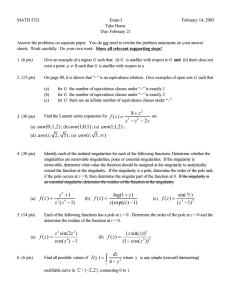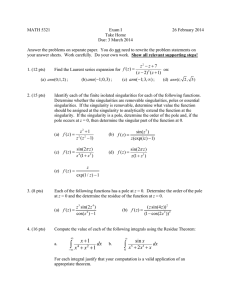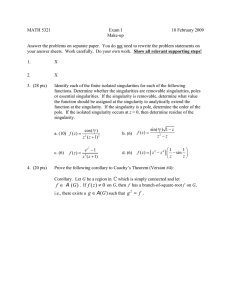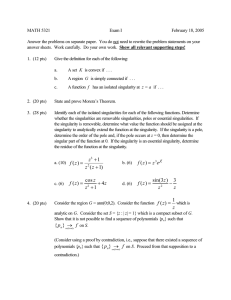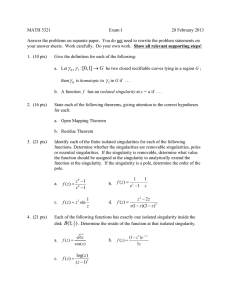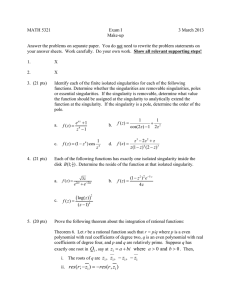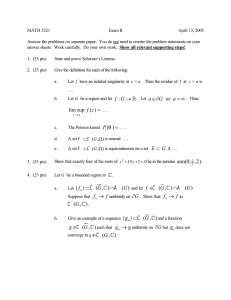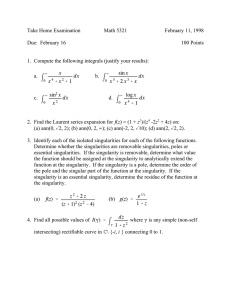MATH 5321 Exam I 16 February 2009 Take Home
advertisement
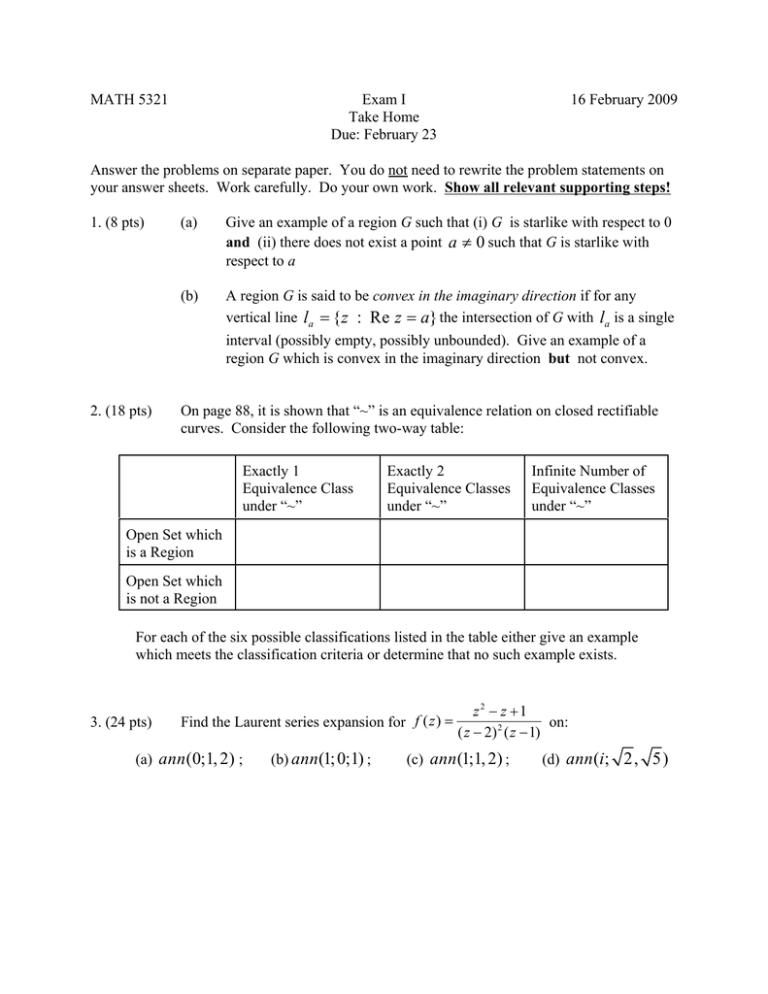
MATH 5321
Exam I
Take Home
Due: February 23
16 February 2009
Answer the problems on separate paper. You do not need to rewrite the problem statements on
your answer sheets. Work carefully. Do your own work. Show all relevant supporting steps!
1. (8 pts)
(a)
Give an example of a region G such that (i) G is starlike with respect to 0
and (ii) there does not exist a point a ≠ 0 such that G is starlike with
respect to a
(b)
A region G is said to be convex in the imaginary direction if for any
vertical line la = { z : Re z = a} the intersection of G with la is a single
interval (possibly empty, possibly unbounded). Give an example of a
region G which is convex in the imaginary direction but not convex.
2. (18 pts)
On page 88, it is shown that “~” is an equivalence relation on closed rectifiable
curves. Consider the following two-way table:
Exactly 1
Equivalence Class
under “~”
Exactly 2
Equivalence Classes
under “~”
Infinite Number of
Equivalence Classes
under “~”
Open Set which
is a Region
Open Set which
is not a Region
For each of the six possible classifications listed in the table either give an example
which meets the classification criteria or determine that no such example exists.
3. (24 pts)
Find the Laurent series expansion for f ( z ) =
(a) ann (0;1, 2) ;
(b) ann (1; 0;1) ;
z2 − z +1
on:
( z − 2) 2 ( z − 1)
(c) ann (1;1, 2) ;
(d) ann (i; 2, 5)
4. (24 pts)
Identify each of the finite isolated singularities for each of the following
functions. Determine whether the singularities are removable singularities, poles
or essential singularities. If the singularity is removable, determine what value
the function should be assigned at the singularity to analytically extend the
function at the singularity. If the singularity is a pole, determine the order of the
pole and, if the pole occurs at z = 0, then determine the singular part of the
function at 0.
(a) f ( z ) =
z +1
z ( z 2 − 1)
(b) f ( z ) =
log(1 + z )
z (exp(iz ) − 1)
(c) f ( z ) =
sin(2π z )
z 4 ( z 2 − 1)
(d) f ( z ) =
exp(2π i / z ) − 1
z ( z 2 − 1)
5. (14 pts)
2
Each of the following functions has a pole at z = 0. Determine the order of the
pole at z = 0 and the determine the residue of the function at z = 0.
(a) f ( z ) =
6. (16 pts)
(b) f ( z ) =
( z sin(3 z )) 2
(1 − cos( z 2 )) 2
Compute the value of each of the following integrals using the Residue Theorem:
∞
a.
z 3 sin(2 z 3 )
cos( z 4 ) − 1
∫
0
cos 3 x
dx
2
( x + 1)( x 2 + 4)
∞
b.
∫
0
x2
dx
( x 2 + 9) 2
For each integral justify that your computation is a valid application of an appropriate
theorem.
